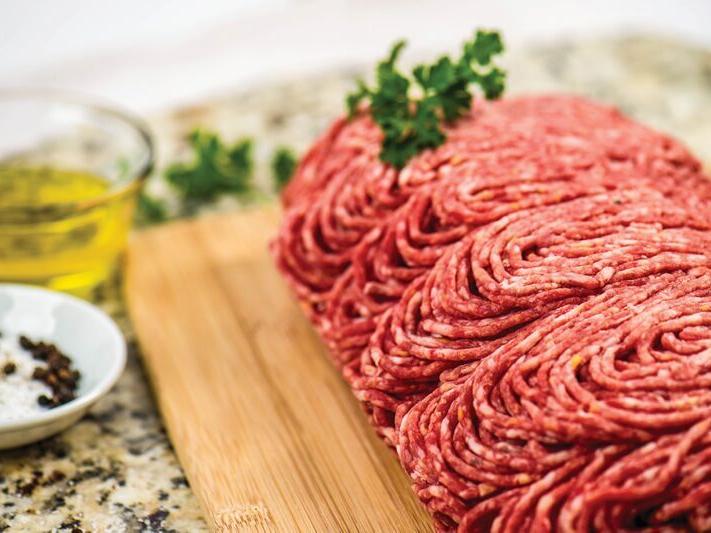George Lake may think outside the box when it comes to raising beef, but his approach is always rooted in grass.
The 74-year-old Marine veteran and retired airline pilot started Thistle Creek Farms in Tyrone, Pennsylvania, more than 30 years ago. Today, his grass-fed beef operation is home to 600 animals on just as many acres.
The farm started as a dairy operation, and generations of Lake’s family worked the land, but he decided on a different approach to raising cattle when he took over.
“On 600 acres of grass I can run 1.3 animal units per acre through here a year,” he said. “Our animals are always outside, and we don’t have a manure spreader. Running cattle like we do, we’re basically imitating the buffalo herds out West.”

George Lake has been raising grass-fed beef for more than 30 years, finishing approximately 240 animals annually.
Lake concentrates his cattle in high numbers on pasture, rotating the animals to new grass several times a day. That generates a lot of traffic on the soil — about a quarter-million pounds of hoof pressure per day — and it’s all part of his plan.
“If you’re pounding soils with cattle feet, you can build an inch of topsoil in a decade or less,” Lake said. “When you run animals tight, you’re pushing the organic matter into the soil.”
Breed Matters
But there’s more to Lake’s approach than concentrating animals and rotating pastures.
Genetics is an important component of the operation.
In grass-based systems, breeds with a moderate frame do best, Lake said. He tried Angus, Charolais and Limousin, but they just didn’t perform well enough on grass. Red Devons and Murray Greys — a breed that originated in Australia — are among Lake’s favorites for grass-fed production.
Lake’s raises 110 cow-calf pairs and buys feeders from surrounding farms. Many of those feeders are produced by Lake’s bulls that he leases to other operations. He finishes about 240 cattle a year for freezer beef and restaurants.
Better Grasses, Better Beef
In addition to frequent rotation and good breed selection, there’s a third component that makes Lake’s style a success — good grass and healthy soil.
Lake’s pastures are either 100% grass, or grass mixed with alfalfa or clover. His only herbicide use occurs every five to seven years when he takes a pasture out of production. And aside from occasional applications of boron and sulfur, he rarely applies fertilizer.
Lake also refrains from insecticide use, preferring to let the good insects manage the bad. Lightning bugs, he said, are great for controlling alfalfa pests.
Essentially, Lake controls grazing rotations and pasture seedings, but the cows manage everything else.
“Grass-fed is a different game,” he said. “You have to improve the grasses, and that means having a neutral endophyte or endophyte-free variety.
“Healing ground can occur a lot faster than you think when you pay attention to things like microbes, earthworms and soil health. That part of it is a romance for me.”
Lake does make hay to feed in the winter, and he augments the grass diet with mineral tubs. In the winter, the cows are moved to 40-acre sacrifice lots, and his bred cows feed on strips of non-GMO corn that Lake knocks down with a four-wheeler.
“It’s a good maintenance diet for them, and they don’t lose any body score,” he said.
Still, relying solely on grass to finish beef does have its limitations. Cows fed a grain diet in a feedlot can gain 4 pounds a day, Lake said, while his animals put on 2 ¼ pounds daily. So it takes a bit longer to finish grass-fed beef — up to 30 months for some breeds.

Border collies and a four-wheeler are used to move cattle between pastures at Thistle Creek Farms.
Sunlight is also crucial in determining how long it takes for an animal to finish. Without it, there aren’t enough sugars in the grass, and cattle won’t marble the best, Lake said.
But there are plenty of advantages to the grass-fed approach.
Other than haymaking equipment, there is no machinery to maintain, and since the cows are always outside, there’s no housing cost involved. In fact, Lake often relies on his border collies or a horse, rather than a tractor, to move his cattle.
“I can produce more profit on an acre with grass than an acre planted with a crop. Good genetics and good grasses make a good product,” he said.
And when it comes to producing beef, profit means everything, said Lake, a busy guest speaker at events across the country. He presents his keys to grass-fed success, and says what he does on 600 acres can be replicated by a small producer with 20 acres, and he hopes people copy his style.
“It’s easier to be sustainable when you’re profitable, and I want to see these small farms improve and succeed,” he said. “I like seeing small farms on the land better than housing developments.”
The Link LonkMay 21, 2021 at 07:30PM
https://ift.tt/2T0znjA
Patience Pays for Grass-Fed Beef Farmer | Beef & Cattle Farming News | lancasterfarming.com - Lancaster Farming
https://ift.tt/2RxTDX4
Beef



No comments:
Post a Comment